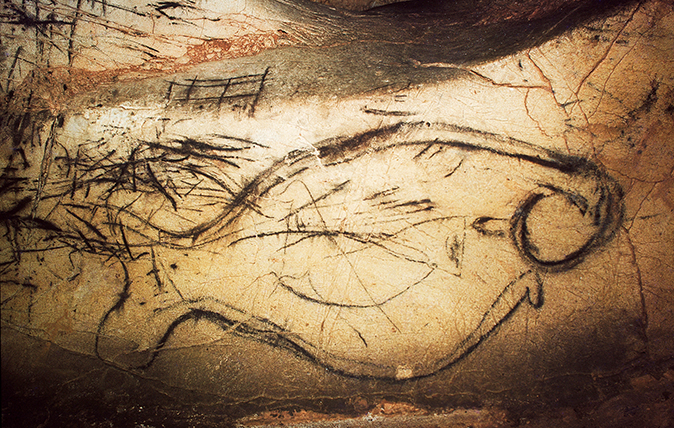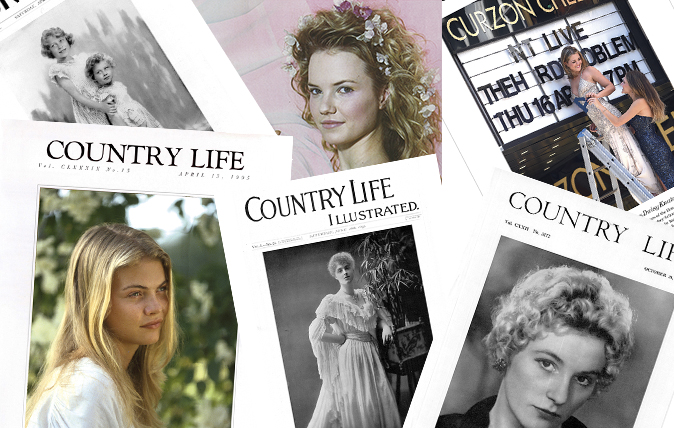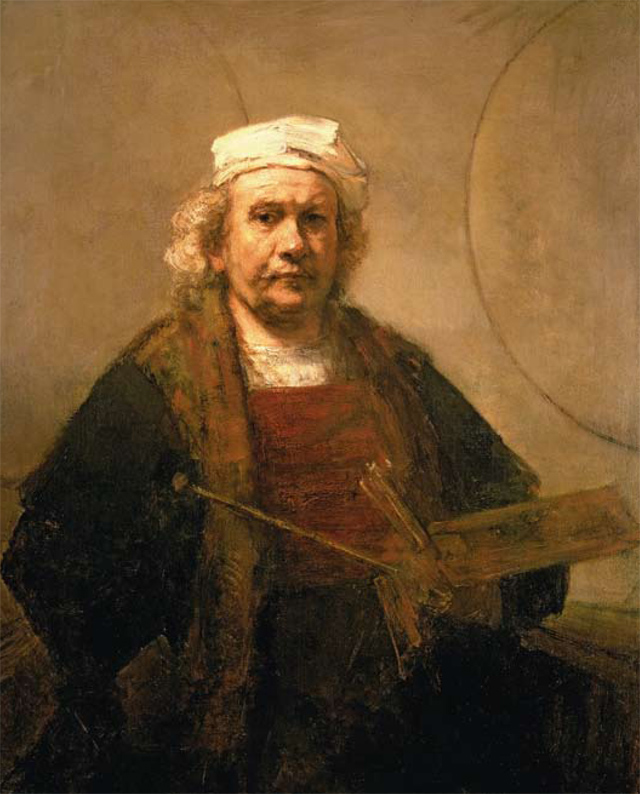My favourite painting: Peter Randall-Page
'It is fresh and beautifully observed'


The Fish, La Pileta Cave, about 20,000bc, 5ft long, Province of Malaga, Andalucia, Spain
Peter Randall-Page says: I decided on the fish drawing from Cueva de la Pileta because it is fresh and beautifully observed and because it was made by someone, probably not dissimilar to me, more than 20,000 years ago and I saw it, by torchlight, last week.
Peter Randall-Page is a sculptor and artist. His work can be seen in ‘On Form: Sculpture in Stone’ at Asthall Manor, Oxfordshire, until July 8; in the Summer Exhibition at the Royal Academy, London, until August 19; and at Castle Drogo, Devon, until November 4.
John McEwen comments on The Fish: La Pileta Cave is still in the family of the farmer José Lobato, who discovered it in 1905. It’s in the limestone mountains of the Serranía de Ronda, 10 minutes by car from Ronda, near the village of Benaoján. Lobato was looking for the home of the local bat colony (still 4,000 strong) as a source of valuable fertiliser, a hazardous operation in those days that required ropes. When he finally entered the cave, he found evidence of, he thought, Moorish occupation (8th–15th century). The drawings and markings earned the cavernous complex the name Los Letreros: The Signs.
Later, Col Willoughby Cole Verner, a keen ornithologist, visited the district. He had no informed anthropological interest, but his guide’s chatter of Los Letreros aroused his curiosity. Consequently, during the winters of 1909–10 and 1910–11, he explored the cavern. He wrote up his findings, Letters from Wilder Spain, in the Saturday Review.
They were read by two distinguished anthropologists, Abbe Henri Breuil (d. 1961) and Hugo Obermaier (d. 1946), and, in 1912, they conducted a two-month examination with Verner. The historical revelation was that this naturalistic Late Old Stone Age art (25,000bc–15,000bc) was clearly linked to similar, better-known examples in northern Spain and southern France, proving previously unknown lines of cultural communication.
The most famous drawing, the fish – probably a halibut – is at the end of the longest gallery (380 yards) in the deepest part of the cave, now known as the Fish Chamber. It was discovered between the World Wars by Lobato’s son, who also discovered the more convenient entrance currently used for the best and most intimate experience of prehistoric paintings visitable today.
Sign up for the Country Life Newsletter
Exquisite houses, the beauty of Nature, and how to get the most from your life, straight to your inbox.

Hold the front page: 12 famous Frontispieces
Rosie Paterson selects a Frontispiece from each decade. Photographs from the Country Life Picture Library.
My Favourite Painting: Lynn Barber
Lynn Barber chooses her favourite painting for Country Life.

My Favourite Painting: Lucinda Bredin
Lucinda Bredin chooses her favourite painting for Country Life.
Country Life is unlike any other magazine: the only glossy weekly on the newsstand and the only magazine that has been guest-edited by HRH The King not once, but twice. It is a celebration of modern rural life and all its diverse joys and pleasures — that was first published in Queen Victoria's Diamond Jubilee year. Our eclectic mixture of witty and informative content — from the most up-to-date property news and commentary and a coveted glimpse inside some of the UK's best houses and gardens, to gardening, the arts and interior design, written by experts in their field — still cannot be found in print or online, anywhere else.
-
 Six rural properties with space, charm and endless views, as seen in Country Life
Six rural properties with space, charm and endless views, as seen in Country LifeWe take a look at some of the best houses to come to the market via Country Life in the past week.
By Toby Keel
-
 Exploring the countryside is essential for our wellbeing, but Right to Roam is going backwards
Exploring the countryside is essential for our wellbeing, but Right to Roam is going backwardsCampaigners in England often point to Scotland as an example of how brilliantly Right to Roam works, but it's not all it's cracked up to be, says Patrick Galbraith.
By Patrick Galbraith
-
 'As a child I wanted to snuggle up with the dogs and be part of it': Alexia Robinson chooses her favourite painting
'As a child I wanted to snuggle up with the dogs and be part of it': Alexia Robinson chooses her favourite paintingAlexia Robinson, founder of Love British Food, chooses an Edwin Landseer classic.
By Charlotte Mullins
-
 The Pre-Raphaelite painter who swapped 'willowy, nubile women' for stained glass — and created some of the best examples in Britain
The Pre-Raphaelite painter who swapped 'willowy, nubile women' for stained glass — and created some of the best examples in BritainThe painter Edward Burne-Jones turned from paint to glass for much of his career. James Hughes, director of the Victorian Society, chooses a glass masterpiece by Burne-Jones as his favourite 'painting'.
By Charlotte Mullins
-
 'I can’t look away. I’m captivated': The painter who takes years over each portrait, with the only guarantee being that it won't look like the subject
'I can’t look away. I’m captivated': The painter who takes years over each portrait, with the only guarantee being that it won't look like the subjectFor Country Life's My Favourite Painting slot, the writer Emily Howes chooses a work by a daring and challenging artist: Frank Auerbach.
By Toby Keel
-
 My Favourite Painting: Rob Houchen
My Favourite Painting: Rob HouchenThe actor Rob Houchen chooses a bold and challenging Egon Schiele work.
By Charlotte Mullins
-
 My Favourite Painting: Jeremy Clarkson
My Favourite Painting: Jeremy Clarkson'That's why this is my favourite painting. Because it invites you to imagine'
By Charlotte Mullins
-
 The chair of the National Gallery names his favourite from among the 2,300 masterpieces — and it will come as a bit of a shock
The chair of the National Gallery names his favourite from among the 2,300 masterpieces — and it will come as a bit of a shockAs the National Gallery turns 200, the chair of its board of trustees, John Booth, chooses his favourite painting.
By Toby Keel
-
 'A wonderful reminder of what the countryside could and should be': The 200-year-old watercolour of a world fast disappearing
'A wonderful reminder of what the countryside could and should be': The 200-year-old watercolour of a world fast disappearingChristopher Price of the Rare Breed Survival Trust on the bucolic beauty of The Magic Apple Tree by Samuel Palmer, which he nominates as his favourite painting.
By Charlotte Mullins
-
 My favourite painting: Andrew Graham-Dixon
My favourite painting: Andrew Graham-Dixon'Lesson Number One: it’s the pictures that baffle and tantalise you that stay in the mind forever .'
By Country Life